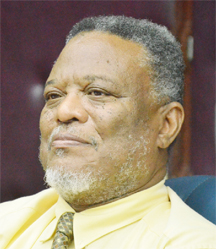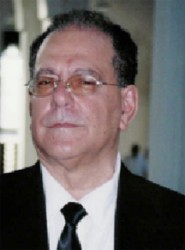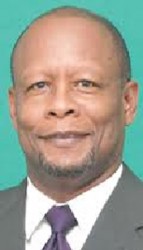Prime Minister Sam Hinds says plans for the state-run National Communications Net-work (NCN) to be given satellite uplink capabilities were dashed by the opposition-led budget cut this year but critics say this occurred after the Learning Channel—for which the government is paying TVG for satellite services—was already set up.
Under a five-year contract brokered in 2010, government is paying TVG $3.6 million per month in a bundled package for services, inclusive of the up-linking cost to the NSS-806 satellite on behalf of the Guyana Learning Channel.
Stabroek News asked Hinds last Wednesday whether any entity other than the Guyana Telephone and Telegraph Company (GT&T) had the capability to provide uplinks. “I think many people could do it [the uplink] but I heard at one time that at the time when they were considering [for the Learning Channel] – I think Ministry of Education said it was only the Ramroop group that had the uplink in Guyana at that time,” Hinds said.

“It is very ironic that the opposition has cut the allocations for NCN because amongst that allocation was funding to put in an uplink,” Hinds added.
Education Minister Priya Manickchand informed the National Assembly that the contract with TVG was entered into in 2010 and is a five-year contract.
The legend for NCN’s allocation of $65 million in the 2012 capital project profiles, says: “The project includes purchase of production equipment for various locations, including broadcast loggers, amplifiers, antenna system with combiners, transmission lines, fibre-optic cables, fibre media convertors, teleprompter, microphones, headsets, tripods, recorders, workstations and generator.” It was also meant to facilitate the purchase of a vehicle. However, under the same allocation of $65million in 2013, it states that some of the money would be going toward the purchase of satellite downlink and uplink equipment.
In response to Hinds’ disclosure, former broadcaster Anthony Vieira and veteran broadcast journalist Enrico Woolford, both point out that the Learning Channel went on the air in 2011, while the government still had a majority in the National Assembly and before any budget cuts.
Vieira maintains that there is not supposed to be an uplink outside the operations of GT&T, which has a monopoly on such services. “They would have had to apply for an uplink to expand TVG,” he said.
Vieira, however, noted that at the time when TVG would have gotten uplink capacity, the Broadcast Authority had not yet been established and television station operators were told that nobody could expand their services. “There was no way that they would have legitimately been able to obtain an uplink… it had to come in through some underhand method,” he argued.

“To bring it in they would have had to get licence from the National Frequency Management Unit,” he said. “The NFMU should be asked to say what date did Ramroop apply to it for an uplink and why it was granted to him, since it would have been an expansion of his service and he was not supposed to expand any service until the Broadcast Authority was formed
.
On what Hinds said about the budget cuts affecting NCN’s ability to do uplinks, Vieira pointed out that the cuts to the budget occurred after the Learning Channel went on the air. “There was no cutting of nothing going on then…,” he said.
According to Vieira, two other television operators had sought an injunction against the Learning Channel from going on the air because it had to operate with a licence and nobody was supposed to get a licence.
Woolford said he examined the budget for NCN as he does every year and it did not include any satellite uplink. “Even if they argue that it is NCN that should have had that budget, the Learning Channel does not come under NCN. It comes under the Ministry of Education, and that ministry would have had a capital budget that would have included expenditure that it would have given to NCN for NCN to use to purchase and procure the equipment,” he added.
“Instead, the Ministry of Education is paying Dr Ramroop, who claims that he has this teleport. I want him to explain to us exactly what this teleport is doing that is not uplink facility that will go from a point to a multipoint distribution across the footprint of the satellite system,” he said. “What fascinating technology this teleport is? What is a teleport? They are trying to bamboozle people by calling a fancy name. It is simply a feed that goes up to a satellite and comes back down,” he said.

“But there is a bigger question and the bigger question should be answered by Intelsat out of Washington DC. The International Telecommunication Union should answer to what Guyana has in terms of satellite orbital slots that were available in 2011,” he said. “Let Bobby Ramroop and let the Government of Guyana say what satellite we are using to distribute this signal and whether it is a private satellite system and how come they are bundling the satellite feeds for a price that normal satellite segment time is not given?” he said. “Something is wrong in the state of Denmark,” he quipped.





